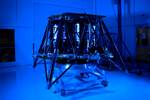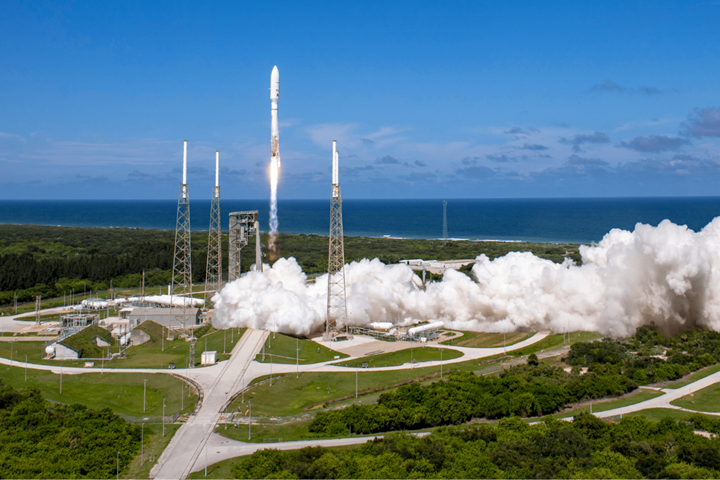ULA Atlas V rocket delivers Project Kuiper, SilentBarker missions
The largely carbon fiber launch vehicle brings success to national security and broadband service goals.
A ULA Atlas V rocket carrying the Protoflight mission for Amazon's Project Kuiper lifts off from Space Launch Complex-41. Photo Credit: United Launch Alliance (ULA)
United Launch Alliance (ULA, Centennial, Colo., U.S.) has announced two successful launches at the Cape Cavaneral Space Force Station in Fla., U.S. using its composites-intensive Atlas V rockets. The first in September 2023 delivered a high-priority mission directly to geosynchronous orbit (GEO), the other in October 2023 delivering initial Project Kuiper prototype satellites from Amazon. To date, ULA reports that it has launched 157 times with 100% mission success.
The Atlas V carried the SilentBarker/NROL-107 mission for the National Reconnaissance Office (NRO) and the United States Space Force’s Space Systems Command (SSC). It lifted off on Sept. 10 at 8:47 a.m. The mission was ULA’s 98th launch for national security and was the final NRO launch aboard an Atlas V rocket as ULA transitions future missions to the next generation Vulcan rocket that will offer optimized flexibility in a single system with streamlined operations and greater affordability. The Vulcan is also highly composites-intensive.
The Protoflight mission for Amazon’s Project Kuiper lifted off on Oct. 6 at 2:06 p.m., the first mission in a broader commercial partnership between ULA and Amazon to launch the majority of the Project Kuiper constellation.
“This initial launch is the first step in support of deployment of Amazon’s initiative to provide fast, affordable broadband service to unserved and underserved communities around the world,” says Gary Wentz, ULA vice president of government and commercial programs. “We have worked diligently in partnership with the Project Kuiper team to launch this mission that will help connect the world. We look forward to continuing and building on the partnership for future missions.”
ULA’s next launch is the inaugural Vulcan mission from Cape Canaveral Space Force Station in Florida, which is said will “carry a commercial lunar lander built by Astrobotic and a payload for Celestis.” Read, “ULA Vulcan rocket progresses closer to launch” for more information.
Beyond Gravity (formerly RUAG Aerospace, Decatur, Ala., U.S.) is manufacturing the carbon fiber structures for the new Vulcan launch vehicle following successful development and qualification. The payload fairings, consisting of two half-shells that are mechanically joined together, are to be manufactured in a partially automated process and without the requirement of an autoclave, Beyond Gravity says. The fairings incorporate an aluminum honeycomb material sandwiched between an inner and outer cover layer of woven carbon fiber. A cork layer applied to the exterior reportedly provides thermal protection against frictional heat generated during launch. Carbon fiber will also be applied to the launch vehicle’s interstage adapters and heat shields.
Related Content
-
Airborne delivers composite upper stage tank for EU ENVOL project
Nine-member consortium targets development of low-cost, green vertical orbital launcher with manufacture of an ultra-lightweight composite tank design in an automated manufacturing environment.
-
On the radar: Reusable launch vehicles, hypersonics make space more accessible
CFRP has become key to targeting efforts in reusing components like rocket stages, as well as the development of reusable hypersonic testbeds and spaceplanes, for increasing space commercialization.
-
Composite molding compound replaces Invar for lightweight small satellite structures
Patz Materials and Technologies and Lawrence Livermore National Laboratory developed a new monolithic optics housing with 80% less weight, near-zero CTE and the high-volume manufacturing required for commercial space.

















